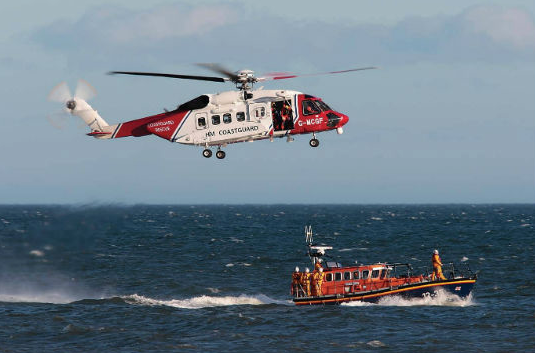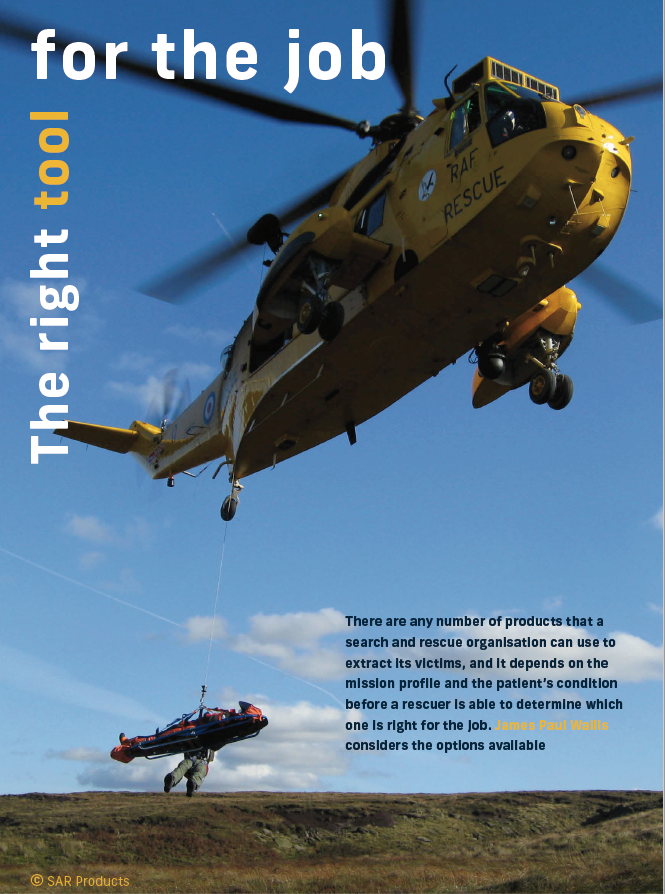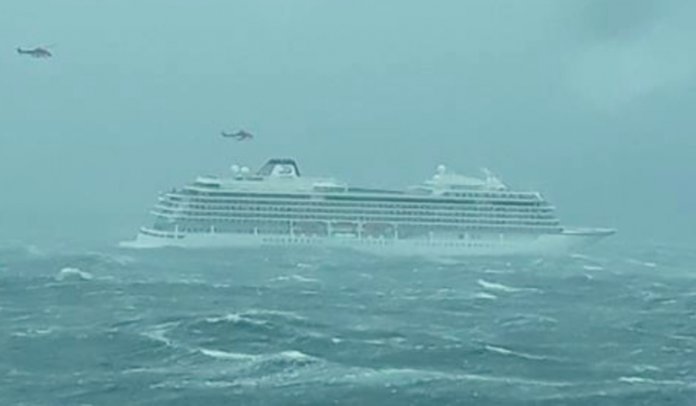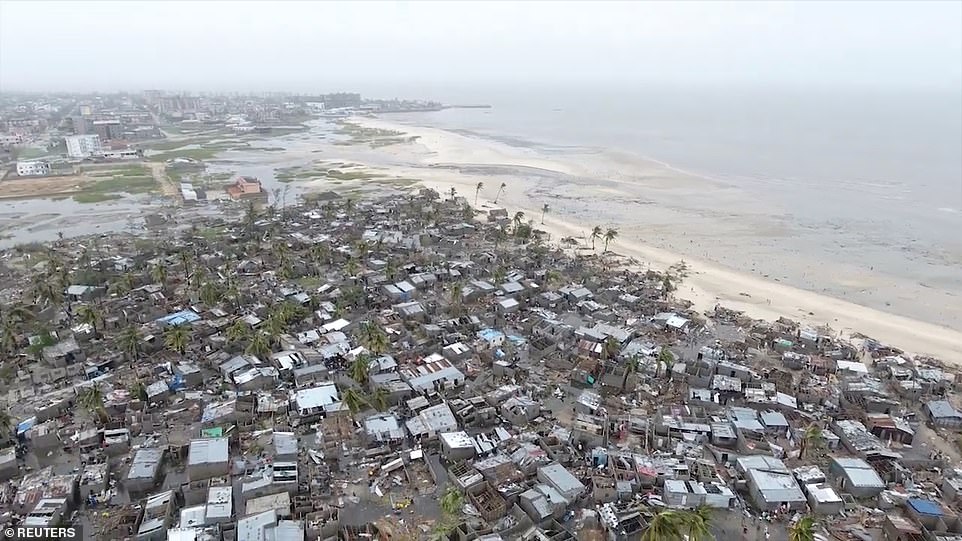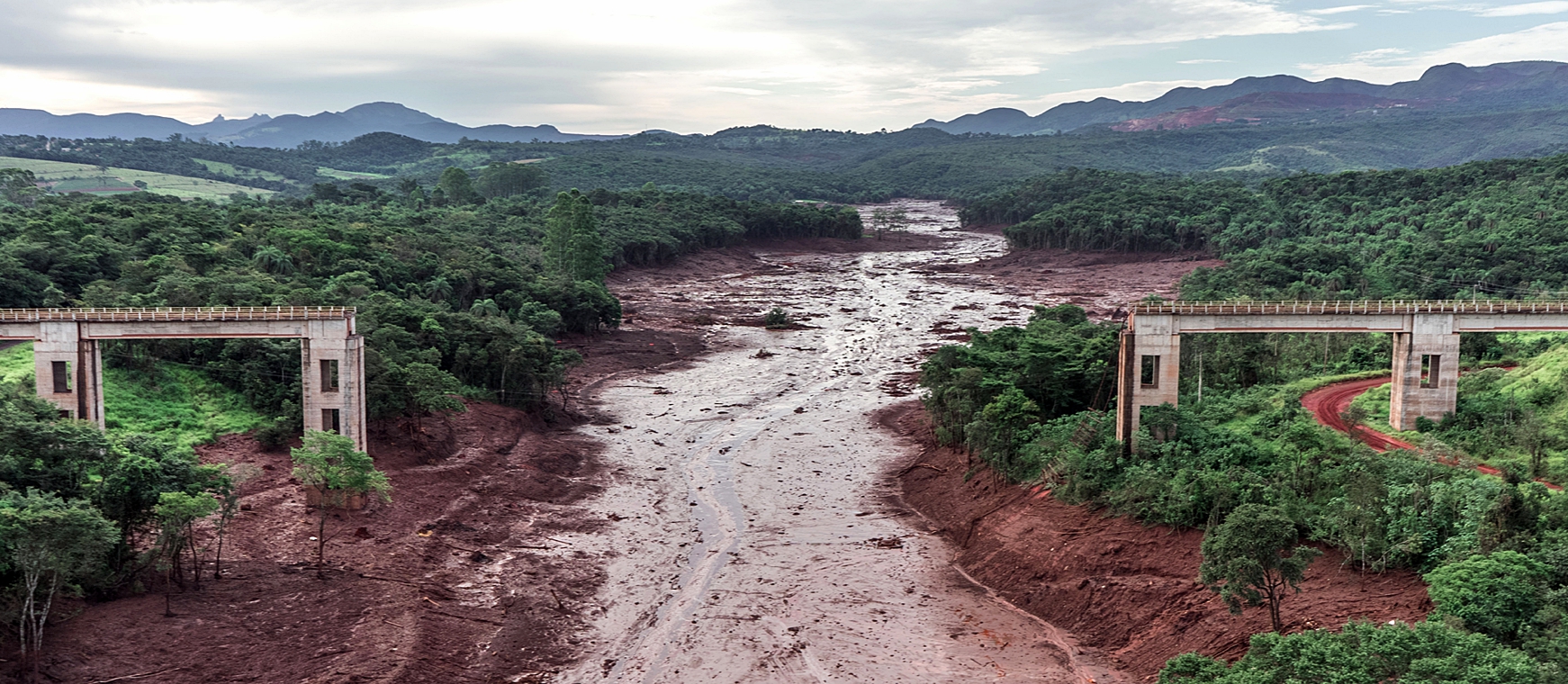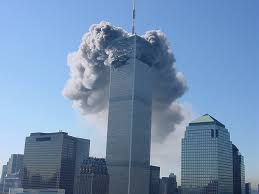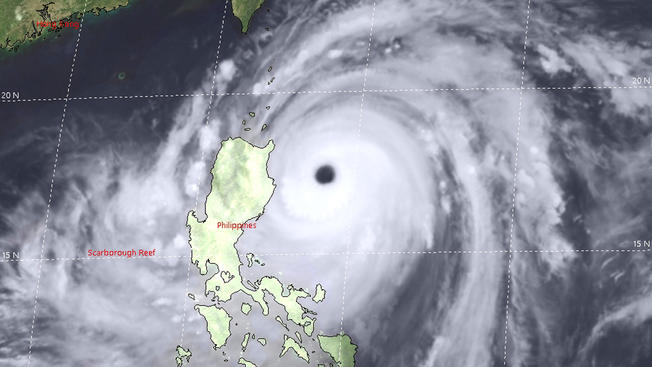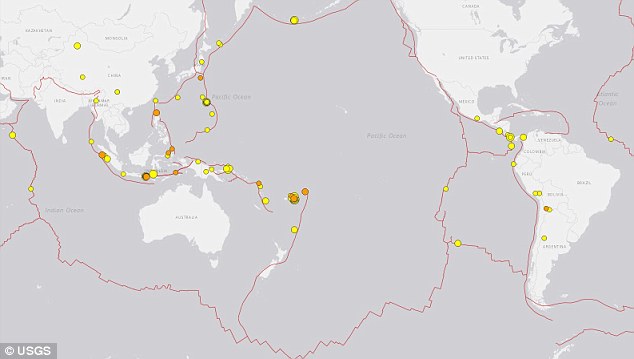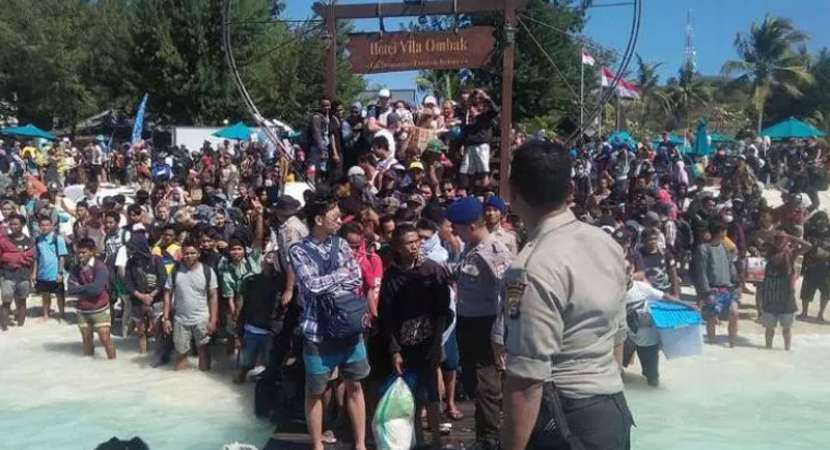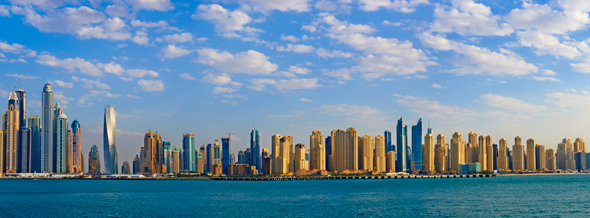MS Viking Sky – It Could Have Been Much Worse!
The latest example of how conventional SAR rescue is insufficient when hundreds of casualties are involved.
#MultiPersonHelicopterRescue
Cyclone that has left ‘1,000 people dead’ in Mozambique is ‘possibly the worst weather disaster to hit the southern hemisphere’ UN says
A cyclone feared to have left a thousand dead in Mozambique is possibly the worst weather disaster ever to hit the southern hemisphere, the UN has declared, Sky News Reports
Some 1.7 million people were said to have been in the path of 105 mph Cyclone Idai in the East African nation while hundreds of thousands more were affected in neighbouring Malawi and Zimbabwe.
Storm surge floods up to 20ft deep had caused ‘incredible devastation’ over a huge area, World Food Programme regional chief Lola Castro said.

“Rescue crews are still struggling to assess the devastation caused by Cyclone Idai which swept in at speeds of up to 170 kph (105 mph) from the Indian Ocean late last week, hitting Mozambique, then its inland neighbours Zimbabwe and Malawi”
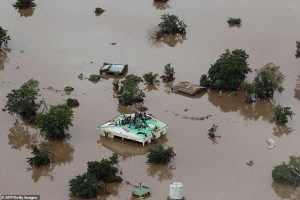 As is often the case after these type of environmental or natural disasters, the event itself is only part of the problem. Roads and bridges have been washed away, so rescue agencies are unable to reach those trapped or isolated.
Sadly, many more are likely to perish as a result of them being trapped or isolated and out of the reach of rescue agencies.
As is often the case after these type of environmental or natural disasters, the event itself is only part of the problem. Roads and bridges have been washed away, so rescue agencies are unable to reach those trapped or isolated.
Sadly, many more are likely to perish as a result of them being trapped or isolated and out of the reach of rescue agencies.
Multi Person Helicopter Rescue is part of the solution. The ability to airlift supplies and medical equipment in, and carry vulnerable or injured casualties out in the same lift cycle.
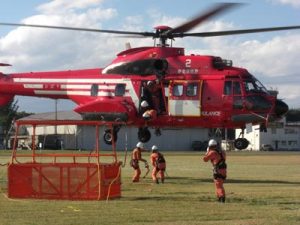
Integral Risk Global
Brazil Dam Collapse – The Recovery Mission Continues
On 25 January, in the heartland of Brazilian mining, a dam collapsed releasing 11.7 million cubic metres of toxic mud. A month on, bodies are still being found.
Few will have missed the news reports describing the devastation caused by the dam collapse on 25 January 2019. Actual footage of the collapse can be found with a brief search if you’re that way inclined, but it’s the devastation after the event that is truly shocking.The BBC have published an excellent article that captures all the emotions:

Global News have also posted a video that shows the extent of the devastation.
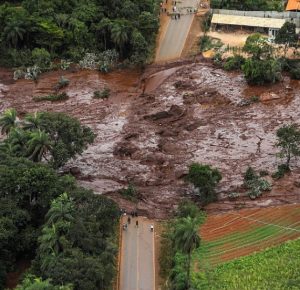
TIME IS EVERYTHING IN A MULTI PERSON HELICOPTER RESCUE EMERGENCY
Time is arguably the most crucial factor associated with emergency rescue situations. Did you know that the Heli-Basket® HB2000has a 15 person transport capacity? Imagine the critical time saved when rescue capacity is multiplied by fifteen!

Benefits of the Heli-Basket® HB2000 include:
- Carries over 2,000kgs or a 15 person rescue capacity
- Can access all locations and environments (High Rise Buildings, Maritime Vessels, regions effected by Floods, Earthquakes, Volcanos, Hurricanes/Typhoons/Cyclones
- Is not CofG Sensitive – The load can be dispersed anywhere within the Heli-Basket® without it affecting in flight stability
- Significantly increases Golden Hour Capabilities
- Ideal for mass short-haul rescue
- Suitable for entire population demographic – young, old, conscious, unconscious, injured…
- The Heli-Basket can be powered through the Electric Long line, providing light and potentially life saving power during the rescue
The Heli-Basket® can also be utilised for cargo and relief operations within the same flight mission:
- Quick and easy to load and unload
- Increases load efficiencies
- Optimises point-to-point logistics
- Self balancing load
- Once the Heli-Basket is cleared, everything within it becomes a ‘Cleared Load’
- Rigid aluminium frame protects the load
- Can take modular loads
- Can be fitted with a self contained water filtration unit for relief operations
- Can be fitted with self contained generators for providing additional power
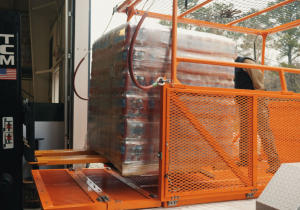
The Heli-Basket® also improves efficiency and safety to ground crew:
- Improves ground safety and obstacle clearance when deployed with the Remote Electric Hook
- Helps to avoid brown/white out
- Offers quicker turn around times – further improving life saving efficiency
- Maximises rescue/loads per hour – reducing operating costs.
IF YOU COULD SAVE MORE LIVES, FASTER, WHY WOULDN’T YOU?
WWW.INTEGRALRISK.GLOBAL
The Philippines – The Most Vulnerable Country In The World?
Typhoon Mangkhut and Hurricane Florence – two major storms, 9,000 miles apart.
Two of the year’s biggest storms (probably!) made landfall this weekend; Hurricane Florence hitting the Carolina’s in the South East United States, and Typhoon Mangkhut sweeping through the Northern Philippines and on to Hong Kong and South East China.
Typhoon Mangkhut has been described as a Super Storm – a Category 5 storm with winds up to 180 mph. It is the 15th storm to have hit the Philippines this year.
There were fears that the storm could repeat the levels of death and destruction seen after Typhoon Haiyan in 2013 – Haiyan’s fury affected more than 14 million people across 44 provinces, displacing 4.1 million people, killing more than 6,000 people, and leaving 1,800 missing. In addition, 1.1 million houses were either partially or totally damaged, 33 million coconut trees (a major source of livelihoods) were destroyed, and the livelihoods of 5.9 million workers were disrupted.
Thankfully, it seems as though Typhoon Mangkhut – although nearly as powerful, has not led to the same level of destruction. At the time of writing, 65 people are confirmed dead and a further 43 remain missing. It is estimated that around 250,000 people were evacuated prior to the storm making landfall.
As is often the case after natural disasters, the subsequent rescue and disater relief operation is being severely hampered by blocked roads caused by landslides making it almost impossible to get rescue equipment to areas where its most needed. Sadly, those landslides also appear to have buried dozens of people making it that much slower in being able to to clear them.
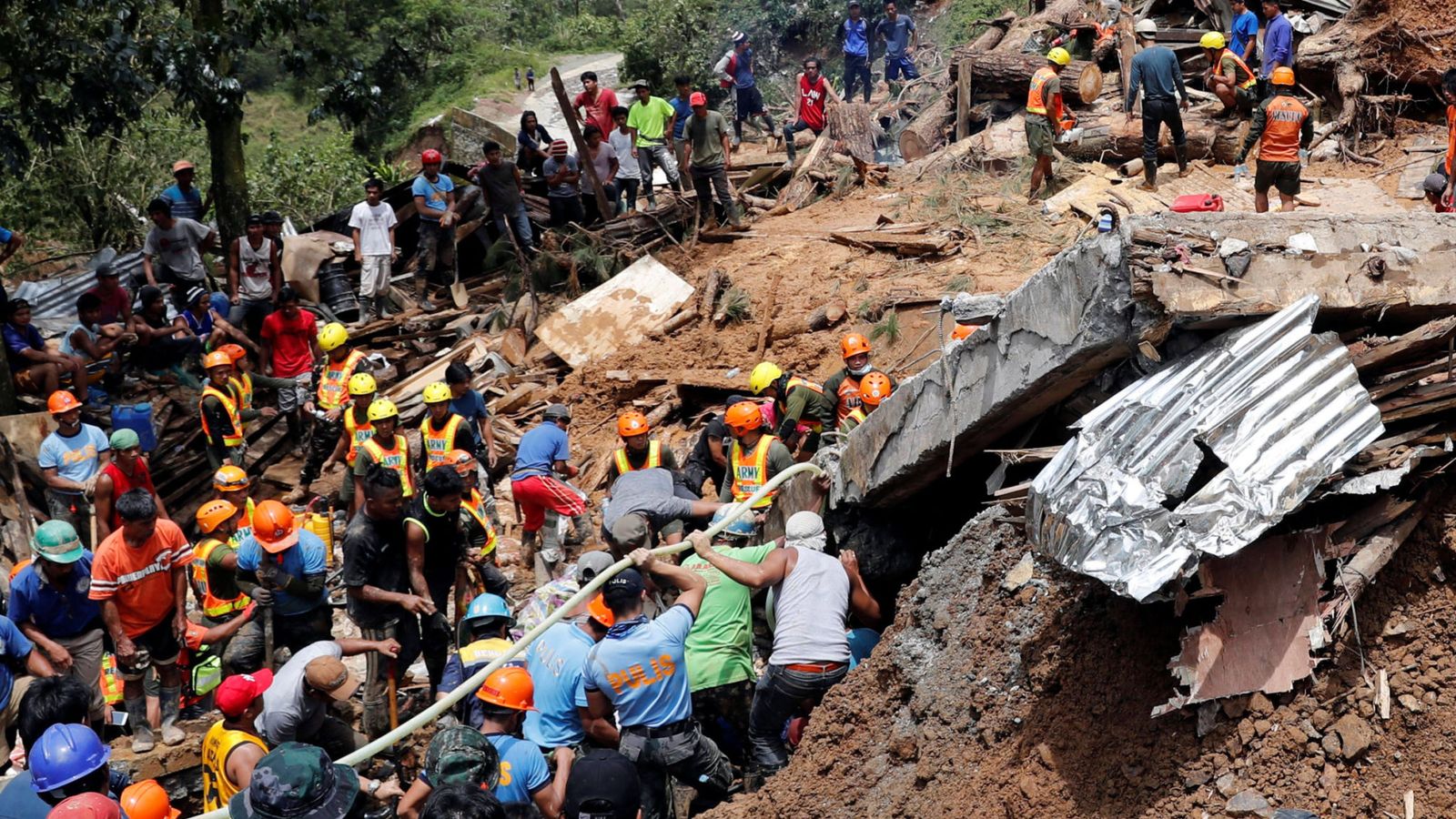
The Philippines is no stranger to natural disasters. Not only does it sit on the Pacific Rim Of Fire making it very susceptible to volcanoes and earthquakes, but the country is also ranked at the second most effected in the world by tropical storms. Being a densely populated archipelago of over 7,000 islands, means that the effects of those frequent natural disasters often have a disproportionally heavy impact on its population.
The Philippines is hit by an average of around 20 tropical storms per year and increasing sea temperatures will only increase that number. So it’s hardly surprising that the government invests around 2 percent of its national budget in climate-change adaptation and risk reduction.
So the country takes its situation seriously and is working hard to address the causes of rising sea temperatures, but without a significant global response, the Philippines’ climate change actions and measures are likely to have little impact in isolation.
So prevention measures are clearly vitally important, but countries like the Philippines will never be able to prevent all natural disasters – or even most of them.
Post emergency response planning is therefore equally important – perhaps more important (if we accept that we can never alleviate the causes of most of these natural disasters).
Access to the post storm emergency areas is once again a major problem for the rescue and relief effort. Landslides have blocked roads – the area most heavily effected by Mangkhut is quite remote, and with infrastructure damaged or reduced in capability, getting rescue machinery, medical supplies, food and clean water to the areas is proving difficult. Post incident access problems is a common symptom of large scale natural disasters and is often the cause of further significant loss of life.
Helicopters form the cornerstone of many relief operations, but helicopters aren’t always utilised to their fullest extent.
With robust forward planning – and training where necessary, equipment can be pre-positioned in strategic locations around a country such as the Philippines, which can go some way to address the post incident access problem. Medical supplies, Power Generators, Water Filtration Pumps, Food and Water can very easily be loaded and pre-positioned and then delivered utilising remote point to point helicopter logistics.
Those same delivery methods and equipment can then be used to carry rescue personnel to a position of relative safety, where longer term care and support can be provided.
#MultiPersonHelicopterRescue #DisasterRelief #HeliBasket
www.integralrisk.global
A Day In The Life Of The Pacific Ring Of Fire!
I recently wrote a blog post describing the Pacific Ring of Fire and how it effects the lives of hundreds of millions of people.
Well, it seems that its seismic activity has increased over recent days. The UK’s Daily Mail online edition posted this report today:Sixty nine major earthquakes hit the Pacific’s Ring of Fire in just 48 hours driving fears that the ‘Big One’ is about to hit California
We can’t stop them… but we can plan for them!Multi Person Helicopter Rescue
www.integralrisk.global
How Many People Live Around The Pacific Rim Of Fire? And Why It Matters!
Volcanoes, Earthquakes and Tsunamis
The Pacific Ring of Fire is a string of volcanoes and sites of seismic activity around the edges of the Pacific Ocean. The tectonic activity along the Ring of Fire results in about 90% of the world’s earthquakes, including the Valdivia Earthquake of Chile in 1960, the strongest ever recorded earthquake at 9.5 out of 10 on the Richter Scales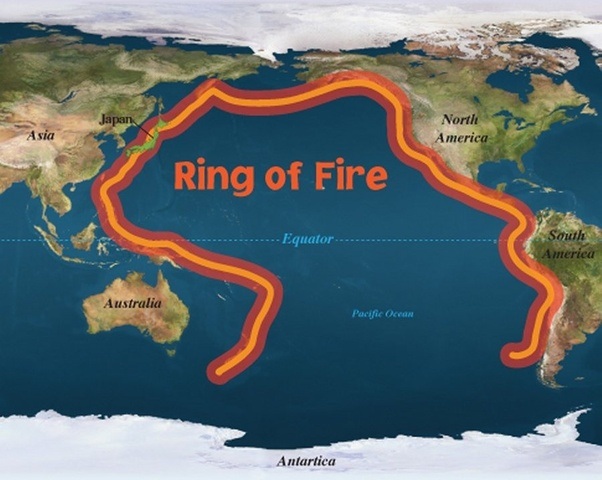 The Ring of Fire is also where an estimated 75% of the planet’s volcanoes are located, such as Mount Tambora of Indonesia, which erupted in 1815 and became the largest volcanic eruption in recorded history.
All but three of the world’s 25 largest volcanic eruption of the last 11,700 years occurred at volcanoes in the Ring of Fire
The Ring of Fire is also where an estimated 75% of the planet’s volcanoes are located, such as Mount Tambora of Indonesia, which erupted in 1815 and became the largest volcanic eruption in recorded history.
All but three of the world’s 25 largest volcanic eruption of the last 11,700 years occurred at volcanoes in the Ring of Fire
Probably a good place to stay away from, right??
The problem is that some of most densely populated countries and cities on earth sit directly on the Ring of Fire. Lima, Quito and Santiago in South America. San Diego, Los Angeles and San Francisco in North America. Then you have whole countries with large, dense populations that are situated on the Ring of Fire. Japan (127m people), Philippines (103m people) and Indonesia (267m people). The volcanoes in Indonesia are among the most active of the Pacific Ring of Fire – and there are lots of them!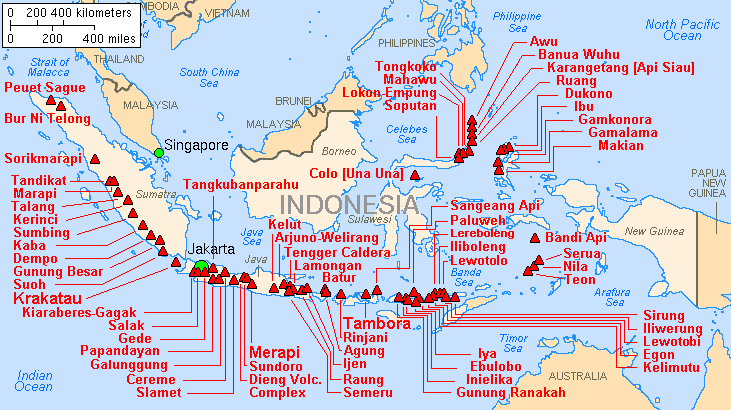
Lombok August 2018
Recent events have reminded us of just how vulnerable Indonesia is, when a magnitude 6.9 earthquake hit Lombok on 5 August 2018. In the following days, a number of powerful aftershocks have hit the same region – one measuring 5.9 magnitude on 9 Augusts. At the time of writing, 436 people have been confirmed killed and up to 350,000 have been displaced or directly effected by the earthquakes. The vast number of people that are living on the Pacific Ring of Fire meant that further incidents will continue to occur. Whilst the frequency of volcanic and earthquake events does not seem to have increased over recent centuries, the population explosion in the region means that the effects of these events are becoming increasingly severe. According to the Red Cross, aid groups are struggling to reach the epicentre of the Lombok earthquake, located in the northern, more residential part of the island. Their path is blocked by heavy debris, damaged jungle roads and the risk of further landslides. So if we cannot prevent or reduce the regularity of such events, and we cannot reduce the population in the direct vicinity, then all we are left with is the ability to improve our reaction and capability after the events.Multi Person Helicopter Rescue
Multi Person Helicopter Rescue may offer little to tackle the cause of the volcanoes, earthquakes and tsunami events, but as we have seen in Indonesia recently, the misery, suffering and loss of life continues long after the tremors have ceased. Multi Person Helicopter Rescue can fly food, water and medical supplies in to cut-off areas, and then fly injured or trapped personnel out in the same Heli-Basket; making rescue efforts more effective and efficient. Hell-Baskets can be fitted out to become self contained water filtration units and generators and can be dropped by helicopters and running operationally in seconds. Helicopters are already being used in the rescue effort; with the right equipment, training and forward planning, they could be so much more effective in limiting the life threatening situations that exist long after the actual disaster event occurs.https://www.integralrisk.global
How Many High Rise Buildings are there in the world?
How Many High Rise Buildings are there in the world?
Integral Risk Global
With the continued shift towards urbanisation – particularly in developing countries and economies, cities are being ever more squeezed for space. In order to overcome the increasing demand for office and residential units, and as land prices continue to increase, cities and developers are building more and more high rise buildings to heights that previously seemed unimaginable.
Quite how you define a high rise building is subjective, but for the purposes for this article, I have included buildings above 100m (328′).
We know that conventional fire fighting equipment (ladders and hoses) are able to reach around about 7 floors (approx 30m), but frankly, trying to identify the number of buildings above 30m is impossible – there are tens of thousands of them!
According to Wiki, If we only include cities with 10 or more, there are 22,791 skyscrapers over 100m around the world! 3 cities – Hong Kong, Shanghai and Shenzhen (all in China), have 5,650 alone!
How many of those cities (or individual building owners) do we think, have a coherent rescue plan for the evacuation of multiple personnel and casualties in the event of an emergency where fire escapes are blocked, filled with smoke or are unusable for any number of reasons?
I don’t know the answer, but I would be quite confident in guessing that few, if any, know how they would carry out a high rise evacuation of multiple personnel who are trapped above the level of a fire or major incident.
Multi Person Helicopter Rescue isn’t the only solution, but it’s one that has been proven to work. In 1993 – 8 years before the 9/11 terrorist attacks, 28 people were rescued from the rooftop of the WTC after a terrorist bomb had been detonated in the parking garage beneath the towers.
Fast forward 8 years, and we know that several helicopters were flying around the top of the WTC after the 9/11 terror attacks before the towers fell.
So we know that roof top helicopter rescues can work in high rise building evacuations – in fact, they’re likely the only realistic option when internal escape routes are inaccessible. Yet few, if any cities have considered the option.
Multi Person Helicopter Rescue from high rise building emergencies is not feasible in every emergency situation. The Grenfell Tower fire in London in June 2017 is one example where the fire was largely fuelled by external cladding and so spread very rapidly engulfing the upper floors and roof top area. Multi Person Helicopter Rescue from the roof top area would not have been possible in that example. However, in many cases it is!
It is becoming more politically and socially unacceptable for lives to be lost when solutions that could have saved lives already exist.
With over 23,000 high rise buildings above 100m in height around the world, forward thinking risk mitigation and planning is more important than ever.
Multi Person Helicopter Rescue is one such solution.What is Multi Person Helicopter Rescue?
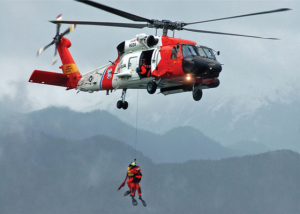
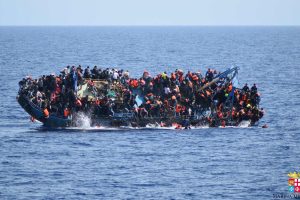
EXTERNAL LOAD OPERATIONS
The key to successful external load operations is high quality, robust, reliable equipment and operators who are trained in the proper methods and use of vertical reference flying. Heli-Basket has developed the most advanced equipment available for Multi Person Helicopter Rescue. Together, Integral Risk Global and Heli-Basket offer the supply of Multi Person Helicopter Rescue equipment, whilst Integral Risk Global provides a source of operational delivery and training for all aspects of external load operations.INTEGRAL RISK GLOBAL SERVICES
- SUPPLY OF HELIBASKETS AND SUPPORT/ROLE EQUIPMENT
- HELI-BASKET® ROLE TRAINING
- HELI-ABSEIL AND FAST ROPING
- MILITARY (SF) INSERTION EXTRACTION
- CIVIL EMERGENCY
- MARITIME SECURITY AND RESCUE
How much does it cost to establish a Multi Person Helicopter Rescue capability?
It doesn’t sound very expensive at all now, does it?
